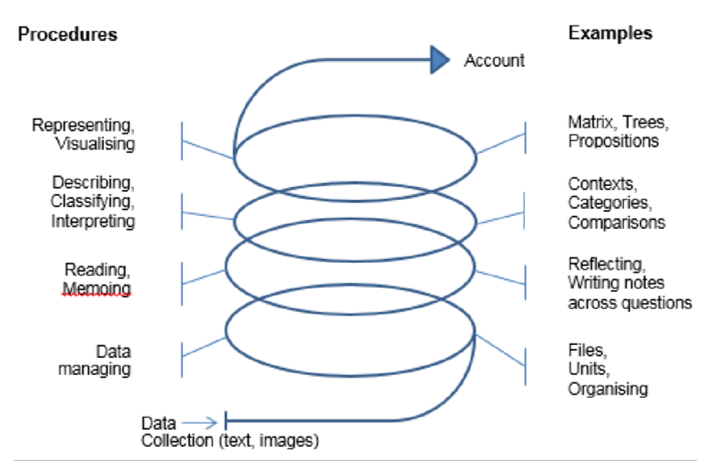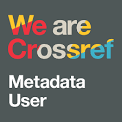Analysis of Junior High School Students' Mathematical Disposition Through Congklak Games in Working on Story Problems
DOI:
https://doi.org/10.51574/ijrer.v4i3.3525Keywords:
Congklak Game, Junior High School, LCM and CGF Material, Mathematical Disposition, Story ProblemsAbstract
This study is important because of the many challenges faced by students in understanding word problems, especially those related to the concepts of LCM and GCF. Therefore, this study intends to examine students' mathematical disposition in solving word problems related to the concepts of Least Common Multiple (LCM) and Greatest Common Divisor (GCF). The research method used was a qualitative one, analyzing subjects in junior high school. This study was conducted in grade VII of junior high school MHI Bangsalsari. The instruments used include observation, problem study (questions), interviews, and documentation. We analyze the data using qualitative descriptions to solve word problems, utilizing Congklak as an educational tool. The research findings show that the congklak game serves as an excellent medium to increase students' interest in mathematics during the learning process. The implications of this research can help teachers in explaining topics by providing learning media that facilitate student understanding.
References
Acosta-Gonzaga, E., & Ramirez-Arellano, A. (2022). Scaffolding matters? Investigating its role in motivation, engagement and learning achievements in higher education. Sustainability, 14(20), 13419. https://doi.org/10.3390/su142013419
Ahmad, E. A. (2024). Revolutionizing learning: leveraging social media platforms for empowering open educational resources. International Journal of e-Learning and Higher Education (IJELHE), 19(1), 83-106. https://ir.uitm.edu.my/id/eprint/91995/
Ambarawati, M., Lika, L. E., Febriola, A., Nurhadi, A., & Ohoiwutun, V. (2024). Penerapan Permainan Tradisional Congklak Pada Pembelajaran Matematika Operasi Hitung Bilangan Cacah dengan Model Kooperatif Student Teams-Achievement Divisions (STAD). Journal of Millenial Education, 3(2), 13-20.
Biag, M., & Sherer, D. (2021). Getting better at getting better: Improvement dispositions in education. Teachers College Record, 123(4), 1-42. https://doi.org/10.1177/016146812112300402
Demetriou, A., Kazi, S., Makris, N., & Spanoudis, G. (2020). Cognitive ability, cognitive self-awareness, and school performance: From childhood to adolescence. Intelligence, 79, 101432. https://doi.org/10.1016/j.intell.2020.101432
DiStefano, M., Retanal, F., Bureau, J. F., Hunt, T. E., Lafay, A., Osana, H. P., ... & Maloney, E. A. (2023). Relations between math achievement, math anxiety, and the quality of parent–child interactions while solving math problems. Education Sciences, 13(3), 307. https://doi.org/10.3390/educsci13030307
Fadillah, A., Nopitasari, D., & Pradja, B. P. (2020). Blended learning model during the covid-19 pandemic: analysis of student’s' mathematical disposition. JTAM (Jurnal Teori Dan Aplikasi Matematika), 4(2), 173-181. https://doi.org/10.31764/jtam.v4i2.2582
Jackson, K., Gibbons, L., & Sharpe, C. J. (2017). Teachers’ views of students’ mathematical capabilities: Challenges and possibilities for ambitious reform. Teachers college record, 119(7), 1-43. https://doi.org/10.1177/016146811711900708
Janse van Rensburg, J., & Rauscher, W. (2022). Strategies for fostering critical thinking dispositions in the technology classroom. International Journal of Technology and Design Education, 32(4), 2151-2171. https://doi.org/10.1007/s10798-021-09690-6
Kenedi, A. K., Helsa, Y., Ariani, Y., Zainil, M., & Hendri, S. (2019). Mathematical connection of elementary school students to solve mathematical problems. Journal on Mathematics Education, 10(1), 69-80.
Kingsdorf, S., & Krawec, J. (2014). Error analysis of mathematical word problem solving across students with and without learning disabilities. Learning Disabilities Research & Practice, 29(2), 66-74. https://doi.org/10.1111/ldrp.12029
Leader, L. F., & Middleton, J. A. (2004). Promoting Critical-Thinking Dispositions by Using Problem Solving in Middle School Mathematics. RMLE Online, 28(1), 1–13. https://doi.org/10.1080/19404476.2004.11658174
Micallef, S., & Prior *, M. (2004). Arithmetic learning difficulties in children. Educational Psychology, 24(2), 175–200. https://doi.org/10.1080/0144341032000160137
Myers, J. A., Witzel, B. S., Powell, S. R., Li, H., Pigott, T. D., Xin, Y. P., & Hughes, E. M. (2022). A meta-analysis of mathematics word-problem solving interventions for elementary students who evidence mathematics difficulties. Review of Educational Research, 92(5), 695-742. https://doi.org/10.3102/00346543211070049
Olivares, D., Lupiáñez, J. L., & Segovia, I. (2020). Roles and characteristics of problem solving in the mathematics curriculum: a review. International Journal of Mathematical Education in Science and Technology, 52(7), 1079–1096. https://doi.org/10.1080/0020739X.2020.1738579
Prasetyo, E., & Hardjono, N. (2020). Efektivitas penggunaan media pembelajaran permainan tradisional congklak terhadap minat belajar matematika (MTK) siswa sekolah dasar. Jurnal Pendidikan Dasar Borneo (Judikdas Borneo), 2(1), 111-119. http://jurnal.borneo.ac.id/index.php/judikdas/article/view/1450
Pérez, A. (2018). A framework for computational thinking dispositions in mathematics education. Journal for Research in Mathematics Education, 49(4), 424-461. https://doi.org/10.5951/jresematheduc.49.4.0424
Rahmasari, F., Sutriyani, W., & Muhaimin, M. (2023). Efektivitas permainan tradisional congklak terhadap hasil belajar matematika SD. Math Didactic: Jurnal Pendidikan Matematika, 9(3), 508-518. https://doi.org/10.33654/math.v9i3.2466
Rauscher, W., & Badenhorst, H. (2021). Thinking critically about critical thinking dispositions in technology education. International Journal of Technology and Design Education, 31(3), 465-488. https://doi.org/10.1007/s10798-020-09564-3
Sahrunayanti, S., Dema, M., & Wahyuningsih, W. (2023). Pemanfaatan Media Permainan Congklak dalam Meningkatkan Kemampuan Berhitung Siswa. Jurnal Penelitian Inovatif, 3(2), 433-446. https://doi.org/10.54082/jupin.182
Sajida, F., Arjudin, A., & Fauzi, A. (2024). Pengembangan Media Congklak Matematika Untuk Pembelajaran Matematika Pada Materi KPK dan FPB Kelas V SDN 38 Cakranegara. Jurnal Ilmiah Profesi Pendidikan, 9(4), 2331-2338. https://doi.org/10.29303/jipp.v9i4.2788
Sari, C. K., Muslihatun, A., Cahyaningtyas, L., Khaimmudin, R. N. L. H., Fijatullah, R. N., & Nisa, E. U. (2019). Pemanfaatan permainan tradisional untuk media pembelajaran: Congklak bilangan sebagai inovasi pembelajaran matematika sekolah dasar. Transformasi: Jurnal Pengabdian Masyarakat, 15(1), 14-22. https://journal.mudaberkarya.id/index.php/JoME/article/view/137
Sari, J., & Sutirna, S. (2021). Analisis disposisi matematis siswa kelas VIII SMP negeri 3 karawang barat. MAJU: Jurnal Ilmiah Pendidikan Matematika, 8(1), 266-272.
Schaeffer, M. W., Rozek, C. S., Maloney, E. A., Berkowitz, T., Levine, S. C., & Beilock, S. L. (2021). Elementary school teachers' math anxiety and students' math learning: A large‐scale replication. Developmental science, 24(4), e13080. https://doi.org/10.1111/desc.13080
Schoenfeld, A. H. (2013). Metacognitive and epistemological issues in mathematical understanding. In Teaching and learning mathematical problem solving (pp. 361-379). Routledge. https://doi.org/10.4324/9780203063545-23
Semali, L. M. (2017). Literacy in multimedia America: Integrating media education across the curriculum. Routledge.
Siregar, S. N., Solfitri, T., & Roza, Y. (2014). Pengenalan konsep operasi hitung bilangan melalui permainan congklak dalam pembelajaran matematika. Al-Khwarizmi: Jurnal Pendidikan Matematika Dan Ilmu Pengetahuan Alam, 2(1), 119-128. https://doi.org/10.24256/jpmipa.v2i1.107
Sofi-Karim, M., Bali, A. O., & Rached, K. (2023). Online education via media platforms and applications as an innovative teaching method. Education and Information Technologies, 28(1), 507-523. https://doi.org/10.1007/s10639-022-11188-0
Tempelaar, D., Rienties, B., Mittelmeier, J., & Nguyen, Q. (2018). Student profiling in a dispositional learning analytics application using formative assessment. Computers in Human Behavior, 78, 408-420. https://doi.org/10.1016/j.chb.2017.08.010
Tempelaar, D. T., Rienties, B., & Nguyen, Q. (2020). Individual differences in the preference for worked examples: Lessons from an application of dispositional learning analytics. Applied Cognitive Psychology, 34(4), 890-905. https://doi.org/10.1002/acp.3652
Toker, S., & Baturay, M. H. (2022). Developing disposition to critical thinking and problem-solving perception in instructional design projects for producing digital materials. International Journal of Technology and Design Education, 32(2), 1267-1292. https://doi.org/10.1007/s10798-020-09646-2
Vos, P. (2018). “How real people really need mathematics in the real world”—Authenticity in mathematics education. Education Sciences, 8(4), 195. https://doi.org/10.3390/educsci8040195
Zhang, D., Indyk, A., & Greenstein, S. (2021). Effects of schematic chunking on enhancing geometry performance in students with math difficulties and students at risk of math failure. Learning Disability Quarterly, 44(2), 82-95. https://doi.org/10.1177/0731948720902400

Downloads
Published
How to Cite
Issue
Section
License
Copyright (c) 2025 Hoiriyah Hoiriyah, Aswar Anas, Dwi Noviani Sulisawati

This work is licensed under a Creative Commons Attribution-ShareAlike 4.0 International License.









1.png)













